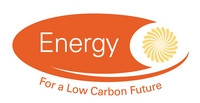Projects
Projects: Custom Search |
||
| Reference Number | UKRI-381 | |
| Title | Upgrading Single Crystal X-Ray Diffraction for Solid-state Characterisation of Molecules and Materials | |
| Status | Started | |
| Energy Categories | Renewable Energy Sources (Solar Energy, Photovoltaics) 5%; Not Energy Related 85%; Other Power and Storage Technologies (Energy storage) 5%; Hydrogen and Fuel Cells (Fuel Cells) 5%; |
|
| Research Types | Equipment 100% | |
| Science and Technology Fields | ENGINEERING AND TECHNOLOGY 100% | |
| UKERC Cross Cutting Characterisation | Not Cross-cutting 100% | |
| Principal Investigator |
Andrew Smith University of St Andrews |
|
| Award Type | Standard | |
| Funding Source | EPSRC | |
| Start Date | 01 January 2025 | |
| End Date | 30 June 2026 | |
| Duration | 18 months | |
| Total Grant Value | £650,000 | |
| Industrial Sectors | Unknown | |
| Region | Scotland | |
| Programme | NC : Infrastructure | |
| Investigators | Principal Investigator | Andrew Smith , University of St Andrews |
| Other Investigator | Tom Brown , University of St Andrews David Cordes , University of St Andrews Andreas Stasch , University of St Andrews |
|
| Web Site | ||
| Objectives | ||
| Abstract | Advanced functional molecules and materials find applications in our everyday lives, from the batteries and displays found in mobile phones, to fuel cells, materials for CO2 capture and computer hard disk drives. As such the study of new molecules and materials underpins progress in diverse fields such as medicine, agriculture, industrial synthesis and catalysis, and energy generation and storage. One of our roles as scientists is to understand how atoms are arranged in these materials. Once this understanding is gained, we can link it to specific properties and the performance of these materials which will ultimately find their way into our everyday lives. One key technique used to study these materials is called single crystal X-ray diffraction. Single crystal X-ray diffraction is a technique used for several reasons: it can identify unknown products or by-products in samples we make in the laboratory; it can give an extremely detailed understanding of how atoms are arranged in these materials; and it can allow us to understand how these atomic arrangements change when materials are subjected to different conditions, such as high or low temperatures, or different gas environments. In turn this allows us to design molecules to have specific chemical features leading to desired properties. This proposal will enable the purchase of two new single crystal X-ray diffractometers that will replace two aging, expensive to operate instruments. The new diffractometers will form a central part of the single crystal X-ray diffraction facility at St Andrews, allowing us to maintain our high sample throughput (typically over 500 samples per year) while significantly improving the sustainability of the facility. The design of the new diffractometers gives them impressive reductions in energy and water use (estimated at up to £15k per year), while still allowing for the collection of high quality data across a broad range of samples. The total cost for both diffractometers is £800k, with the University of St Andrews contributing £300k. Single crystal X-ray diffraction is widely used in physical sciences with the single crystal X-ray diffraction facility supporting over 150 users directly in the School of Chemistry at the University of St Andrews (UStA), as well as others in the Schools of Physics & Astronomy, Earth & Environmental Sciences, and Biology. This facility will support the research of early career researchers and a large number of PhD students (through the EaSICAT and NexGenTech doctoral training programmes) and post-doctoral researchers, in addition to half of the established academics within the School. The vision is that these instruments will be an important addition in our goal to develop sustainable world-class facilities. They will provide a key core science facility that can be accessed by all researchers to enhance the quality of science possible. The work that will be carried out will focus on a variety of materials of fundamental scientific interest as well as applications in batteries, fuel cells, catalysis, photovoltaic materials, gas storage and delivery, and natural products | |
| Data | No related datasets |
|
| Projects | No related projects |
|
| Publications | No related publications |
|
| Added to Database | 16/07/25 | |



